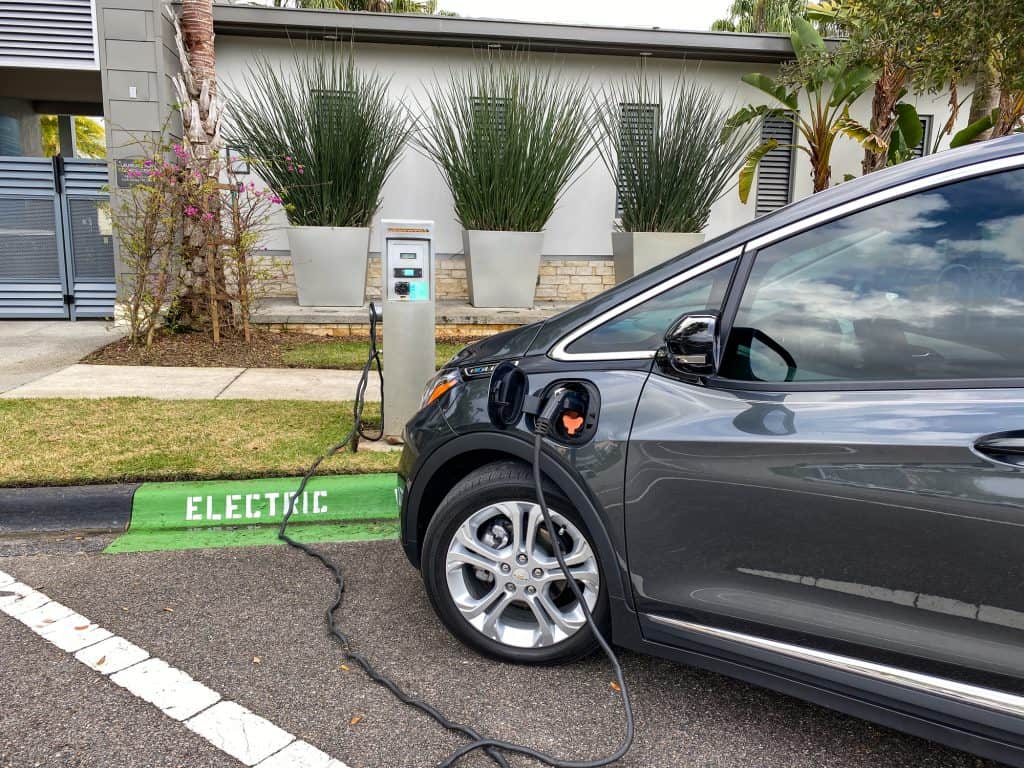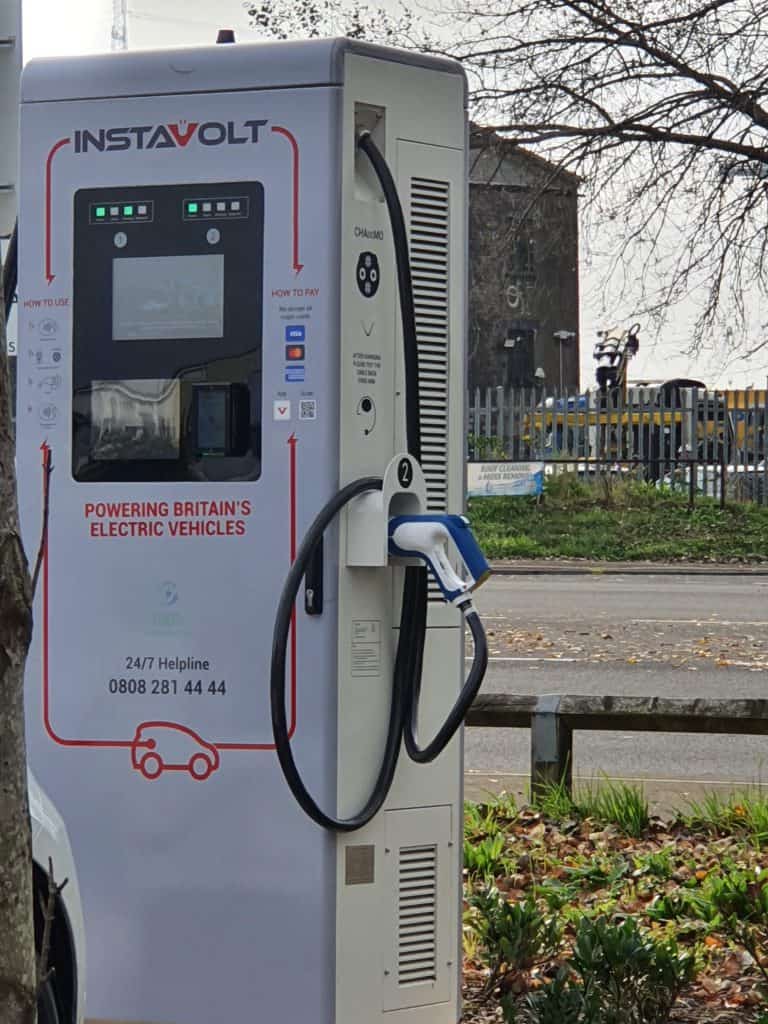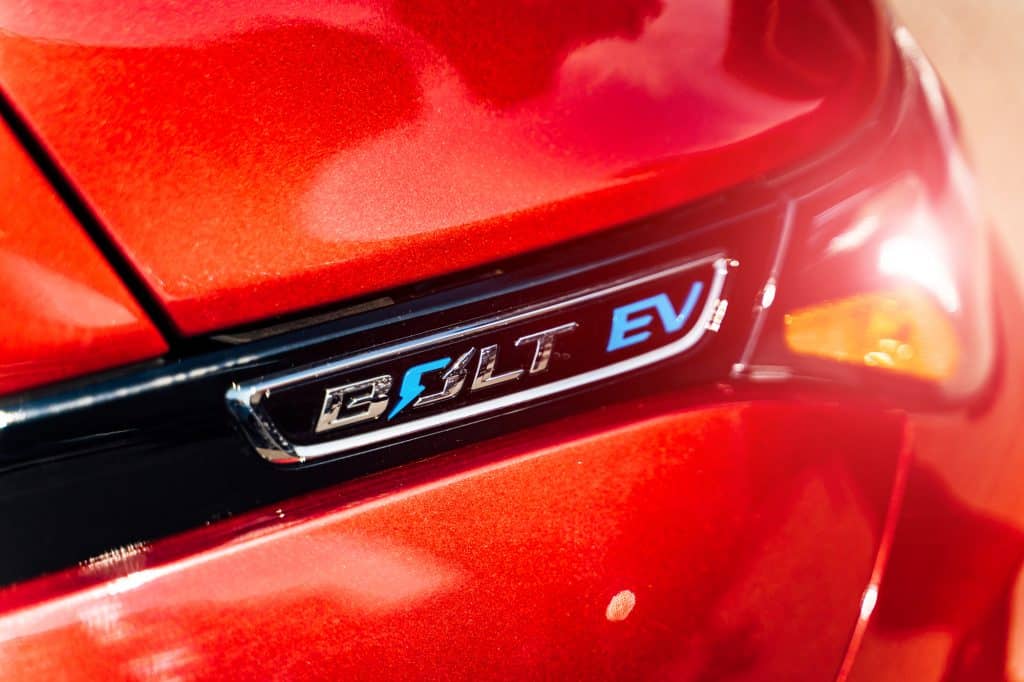The world of Chevy Bolt charging has become confused of late, mostly thanks to the nationwide recall of models now covering well over 100,000 models in the US. There were ideas on charging that were prevalent before the recall that have since been changed as new non-defective batteries replace the original ones.
The multi-billion dollar recall has been a painful lesson for GM, but also makes this guide on charging the Chevrolet Bolt all the more important.
In today’s blog, we’ll first offer some background on the recall, and emphasize the official line from GM regarding charging of the Chevrolet Bolt. If you are a Bolt owner and your car has already received its new battery pack, which in all likelihood it has by now, then we will also fill you in on good charging practices moving forward.
Background: Chevrolet Bolt Recall and Charging Guidelines

In this first section, we’ll cover the recall, what happened, and the guidelines issued by GM regarding charging of those Chevy Bolts that were awaiting new battery replacements. The recall itself began in November 2020, and quickly expanded to just about every Chevy Bolt ever made.
The concern was over a risk of battery packs catching fire, potentially causing deadly house fires if charging in a garage overnight, or a life-threatening situation if catching fire while out on the road.
About 110,000 Chevy Bolts and Bolt EUV units have been recalled, covering model years 2017 to 2022. The recall itself involves a fix both in hardware and software.
In early December 2021, GM announced software updates that would at least make it safe for Bolts to be charged indoors again while they were awaiting their battery check. All batteries on 2017-2019 models are to be replaced, and defective modules in 2020-2022 Bolts are to be replaced.
The good news is that if you are an owner of a Bolt, this work is being carried out at Chevrolet dealerships at no cost to you. GM also issued the following guidelines to those who were awaiting their appointment to get their battery replaced:
- Set Bolt to 90-percent charge limit using Target Charge Level mode. GM offered instructions on how to do this on their recall website. The feature is known as Hilltop Reserve mode in 2017-2018 models.
- Charge the vehicle more frequently and avoid depleting the battery below a remaining range of 70 miles.
- Park the vehicle outside after charging, and do not leave it charging indoors overnight.
CarandDriver.com did a feature on the recall, noting the somewhat alarming fact that about a third of Bolt owners were apparently not following these charging guidelines. It got the information from research group Recurrent, which is able to monitor charging via their own subscribers.
They found that around 30 percent of Bolt owners were apparently not following these safety guidelines. CEO of Recurrent, Scott Case, was quoted as saying:
“Our data is showing that a lot of Chevy Bolt owners are going to have to change their behavior. For some, this could be a hardship if they have long commutes and require more range than the new guidelines allow, especially during the summer when hot temperatures and extra A/C usage affect battery performance.”
Scott Case, CEO, Recurrent
Ultimately, if your Chevy Bolt is still awaiting its replacement battery or battery inspection (2020-2022 models), then you should follow GM’s own guidelines on charging and not deviate from those until you have your assurances that your battery is no longer defective. In the next section, we’ll deal with Bolt charging in the post-recall era.
The Recall is Over: Chevy Bolt Charging in Normal Times

Now let’s assume that you’ve received your new battery, or your existing battery in your 2020-2022 model Bolt has been confirmed as non-defective. What about charging your Chevy Bolt now?
For some, sticking with GM’s guidelines a bit longer might not be a bad idea if it creates no inconvenience for you or your family, just while you make sure that the new battery is also safe as GM undoubtedly claims it is.
How Long Does it Take to Charge a Chevy Bolt?
The current maximum range of the Chevrolet Bolt is a quite pleasing 259 miles on a single full charge. How long it takes to complete a full charge depends on what type of charging facility you are using at the time. Below is a quick guide to charging times:
- Level 1 charger (factory-issued 120V) – 4 miles added per hour of charging
- Level 2 charger (home wallbox) – 25 miles added per hour of charging
- Level 3 charger (fast DC public) – 200 miles added per hour of charging
Is it Bad for the Bolt Battery for Me to Charge it Full Every Day?
It has been a sort of accepted wisdom for some time that charging the battery to full every single day is both unnecessary and harmful to the battery itself, accelerating its degradation. For some early models it may have held true, but the new reality is that battery technology is improving year on year, and degradation is disappearing very rapidly.
One article on hotcars.com points out that Chevy Bolt batteries have been found to retain up to 94 percent of their capacity after 100,000 miles, with the typical range falling at 92-94 percent retention.
With a max range of 259 miles in ambient temperatures when new, you could therefore expect to still be doing at least 238 miles on a single charge after completing 100,000 miles.
What Are the Best Charging Practices for a Chevy Bolt?

Most Bolt owners can follow a similar pattern that most EV users are employing, which is a range of 30-80 percent on the battery day to day, but charging to 100 percent at least once a month to balance the battery cells, and/or before taking a longer journey.
The 30-80 percent range refers to charging your Bolt to no more than 80 percent overnight, and allowing it to deplete no lower than 30 percent on any given day.
This is a good way to avoid putting strain on the battery. Regardless of how much more durable they are, it’s still good practice to take it easy and relieve the battery of undue wear and tear if you can. This is especially true when you consider how expensive replacement batteries can be in the absence of a warranty.
Another good idea with the Chevy Bolt is to make use of the car’s Target Charge Level mode (or Hilltop Reserve mode on 2017-2018 models). For Target Charge Level mode, operation is very simple. On the infotainment home screen, you just have to press the green leaf button in the bottom toolbar, and then select the charging tab.
On the right side of the screen is a sliding tab where you can set the limit of the battery charge. Its default setting is at 100 percent, you can simply slide it down to 90 percent or 80 percent, depending on your preference.
You can also set it while using location-based charging settings by setting limits for “home” and “away” charging in the “Charging Options” screen — it’s the same slider mechanism.
For the Hilltop Reserve mode, one just has to push the green “Energy” button on the infotainment screen, followed by “Energy Settings,” and then “Hilltop Reserve,” which you can then toggle to “on.” A message should appear on the screen when charging that the limiting mode is active.
Is There a Case for Charging to Just 60 Percent?
Insideevs.com featured a video from big-time YouTube Tesla fan/expert Bjorn Nyland in which the commentator advocated for charging your EV to as low as 60 percent:
This is based on the increasingly dated model of thinking, however, that says the more your charge the EV the faster it’s going to degrade. While that strictly speaking might still be true, it’s happening at slower and slower rates to the point of becoming unnoticeable over any significant period of time.
Even Elon Musk chimed in on the debate, favoring the 80 to 30 ratio back in 2014, and in 2018 reinforcing it by saying it’s “not worth going below 80%” for a maximum charge. He said that “even 90% is still fine.”
One thing he did point out for Tesla models is that when the car is at 100 percent charge, it’s actually less energy efficient because the regenerative braking isn’t working at that point.
Conclusion: Stick with 80-30, but Keep a Full Charge in Your Pocket
In the end, the best thing to do with the Bolt battery is to keep it within the safest known parameters, which is still the 80-30 range. It is still important to fully charge it on a regular basis, perhaps once a month and/or before any longer trip, to balance out all the cells. During the uncertain times following a recall, it’s best not to push the problematic component too hard, and in this case, that’s the battery.
After a year or two of proving itself, you can perhaps push your Bolt battery harder, regularly charging to 90 percent. Play it safe while things are still up in the air.
6 comments
I just purchased a Chevy Bolt EVU, 2022. My first electric car.
I am an Electronics Technician, so this is exciting.
I am trying to get use to, and learn how to, take care of the battery.
If you have any tips let me know.
Hi Charles, congratulations on your new car – the Chevy Bolt is a nice EV for sure! In terms of preserving the battery – as long as you don’t frequently charge it up to 100%, and you don’t overly use AC or heating (i.e. using them heavily and all the time will drain your battery quite quickly), you should be find to be honest. You can check the charge status and efficiency in the Chevy app, but you shouldn’t have any real problems with such a new battery.
Good luck!
Thank you for this valuable piece of well thought out and presented information. I just got my my new battery programmed to fully charge today and I’m not charging it for the first time.
One question for you:
I don’t have a charging station at home as I live in a downtown apartment in SF with outdoor parking so I go to EVGo stations (I prefer them). Since I only fast charge daily (I’m a Lyft Driver) will this cause the battery to degrade faster?
I’m still confused. Is it okay to charge my 2022 Bolt EUV to 100%? I usually charge it once a week.
I bought a pre-owned 2017 Chevy Bolt EV a couple years ago and love it, especially after receiving the new battery with a range up to 285. However, in about November, even before the cold set in, the charge capacity dropped dramatically to only 185 max. I wont be taking any trips in it until the weather warms up in the spring so I hope its charging capacity will return to its former range. According to Chevy dealer diagnostics, it is charging as it should but they got it up to 225, maybe in a warmer garage than mine. Anyone else experiencing this? I knew it would delete more quickly in the cold, especially with a heater going, but didn’t expect the huge drop in capacity, and didn’t see that in the winter with my original battery.
I purchased my 2022 Bolt EV in May of 2023. Vin # 1G1FX6507N4104712.
At delivery, the charge registered around 250 miles. I’ve charged the battery with the 120V charger, included with the Bolt, each week since then. The lowest recharge level has been no less than 70 miles. The charged totals have continually dropped each time and only totaled 174 miles this morning, 12/21/23.
What causes this decline in charging total over time and will the safety recall #N212345944, to be serviced on 12/27/23, correct this problem?
Thank you for your help.
Alvin Evans 856-468-1053 – alsevans@comcast.net